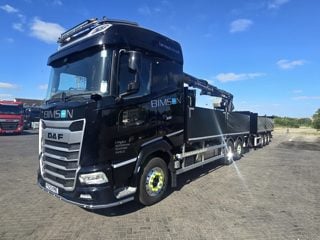Tyre fitter ATS Euromaster says it has witnessed “unprecedented” levels of demand for cold-weather tyres from fleet managers this year.
It had received 80% more forward orders from fleets by October 1 than over the same period last year and it is now predicting that by the end of next March, total sales during winter 2012/2013 will be up by 60%.
That’s on the back of a 200% rise last year, compared with winter 2010/2011 when it began selling to fleets nationwide.
Kwik-Fit Fleet also launched its cold weather tyre programme in 2010/11 and has also seen corporate demand increase dramatically – notably from light commercial vehicle operators and businesses where it is critical for car and van drivers to be mobile regardless of weather conditions.
ATS Euromaster says the strongest demand for cold-weather tyres is coming from home-shopping retailers, bluelight operators and utilities providers.
Peter Fairlie, group sales director of ATS Euromaster, said: “These three sectors have been among the first to recognise the added benefits that cold-weather tyres deliver when the temperature drops below 7°C.
“It’s not just about guaranteeing mobility in the event of snow and ice – there’s a far wider road safety and duty of care issue.”
Among ATS’s cold-weather tyre customers this winter are 25 bluelight emergency services, including NHS Ambulance Trusts.
It has also witnessed a rise in the number of cold-weather tyres supplied to “major car and van fleets” – both those who fund vehicles on tyre-inclusive deals through leasing suppliers and those who buy outright.
Detailed weather analysis from the Met Office shows that temperatures dropped below 7°C – when winter tyres are most effective – during prime commuting hours on 147 separate days between October 1, 2011, and March 31 this year.
This analysis suggests that cold-weather tyres would not have provided direct benefits for drivers on only 35 days in winter 2011/12.
Peter Lambert, fleet director at Kwik-Fit, said: “Since launching our specialist winter tyre programme we have learned a great deal about the profile, make and size of tyres ordered by our customers. I believe that we now have the right stock mix to meet customer needs.”
However, despite the growth in sales, some fleets remain sceptical about cold-weather tyres.
Chris Charlton, road risk manager at Northern Powergrid, told a recent Fleet News roundtable: “We tried to sort out a tyre trial last winter for 15 vehicles but we could only get seven sets of tyres. We have gone down the route of providing snow socks for our engineers as a short-term solution in the worst conditions.”
Paul Tate, commodity manager at Siemens, added: “We don’t want people putting themselves at risk by trying to get to the office. If they do and they have winter tyres fitted, they might be able to stop but if someone behind them can’t it would not stop an accident.”
Geoff Wright, head of corporate services at AAH Pharmaceuticals, has had a better experience.
“We have winter tyres on our van fleet and have won business as a result of staying mobile. The biggest benefit is in England because drivers are not as used to snow,” he said.
“We have also started looking at all-weather tyres for our cars. We have 20 sets on trial and are monitoring degradation in summer and performance in winter.”
cold-weather tyres: the facts
Winter tyres, which are also known as cold-weather tyres, offer improved grip, handling, cornering and reduced braking distances when the temperature drops below 7°C.
They can be identified by a mountain or snowflake symbol on their sidewall and have sipes within the tread blocks that help improve grip at low temperatures.
They are manufactured using more natural rubber and advanced silica compounds which help them to stay softer than summer tyres – enabling them to maintain a better grip – when the temperature drops below zero.
According to the British Tyre Manufacturers’ Association, vehicles braking on icy roads from 20 miles per hour (mph) to rest can stop in 57m if they are using winter tyres while the stopping distance for summer tyres is 68m.
When braking on snowy roads from 30mph to rest, winter tyres are able to stop in 35m. This distance increases to 43m for vehicles using summer tyres under the same conditions.
When the temperature is 5°C, vehicles travelling at 62mph on wet roads using winter tyres are able to stop in 65.7m – compared to 70.5m for those using summer tyres.
But on dry roads at 5°C, vehicles travelling at 62mph using winter tyres take 41.5m to come to a standstill while those using summer tyres can stop in 39.5m.
Author: Ben Rooth



















Login to comment
Comments
No comments have been made yet.